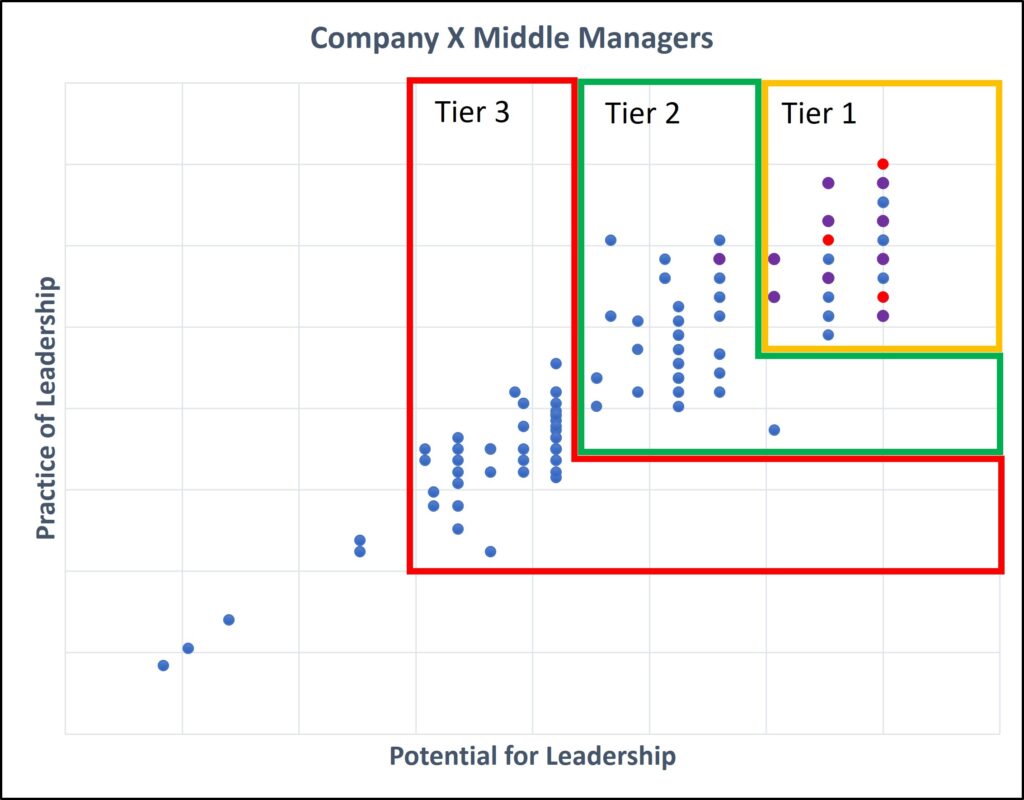Our LeadershipRMSTM DEI analytics component helps organizations:
- Improve diversity, equity and inclusion initiatives by providing a quantifiable means to providing equal access
- Remove or minimize bias in the leadership selection, promotion and hiring processes
- Document nondiscriminatory selection practices
The most frequent arguments against DEI initiatives are focused around competence and merit. On competence, it’s argued that a less competent person is receiving an opportunity because they are from a historically disenfranchised group. In actuality, less competent people have been receiving opportunities because they were from the majority population and/or had a relationship that provided them an unfair advantage for decades.
On merit, they argue that opportunities are given to people solely for DEI purposes and not based on merit. Again, this argument falls short because people who didn’t ‘earn’ their opportunity have been receiving them for years. The evidence of that is all around us. There are many people currently, and in the past, who have or are in leadership positions, that shouldn’t be there.
To counteract these arguments, organizations should incorporate an evidence-based component to their DEI strategy. An evidence-based DEI strategy enables an organization to:
- Document the competency of candidates being promoted
- Verify that people are receiving opportunities they deserve (merit)
- Provide evidence of nondiscriminatory selection process

Additional outcomes from an evidence-based DEI strategy are that it broadens the applicant pool of potential candidates, thus providing more opportunities for all. It can also help improve the pipeline of candidates as the next leader for a particular position would be clearly identified, thus insuring that the right leader is provided the right opportunity at the right time.
In the future, organizations may be forced to justify their DEI programs as nondiscriminatory. The best way to support your program today is by utilizing objective data that indicates that the candidate chosen is just as competent as the candidates not chosen. Here are 3 steps to take:
- Use a tool to provide a quantitative assessment of your organization’s leaders, such as our LeadershipRMS DEITM analytics component to assess the leader along multiple dimensions. It includes a self-assessment to determine how they view their leadership abilities and a team (peers, supervisor and direct reports) perception assessment to validate the individual results.
- Create groupings or tiers of your leaders and potential leaders to document the similarities between candidates in the same grouping. The criteria needs to be summarized into two or three categories to be actionable.
- Select candidates from the groupings or tiers which ensures that the selected candidate is just as qualified as the unselected candidates. Candidates outside of the groupings can be considered, with additional documentation of the decision by the hiring manager. An added benefit of the grouping or tier method is that it can open the selection process to more and better-quality candidates since the choice is from a pool with similar qualifications.

Using LeadershipRMS DEITM, candidates are chosen from a pool of documented top leaders (see chart). The hiring manager would work with their human resource partner to eliminate those who have recently accepted a new position and therefore shouldn’t be moved and those whose profile may not match what the position requires (red dots). Good candidates should easily be available from the top couple of leadership tiers as depicted by the purple dots in the chart.
An added advantage of utilizing this strategy is that it helps identify candidates with the right competencies for the opportunity. The tool utilized to implement this strategy, measures leadership behaviors along nine dimensions. For instance, if the opportunity requires someone to work with a difficult team, they may need someone who possesses a profile with more empathy. If the opportunity is for a new or business extension, it might require someone with a profile that indicates they have a firm grasp of risk-taking. Each dimension represents a specific competency that can be supported.

The time is now to begin quantitatively documenting your selection choices. It’s not a matter of whether there will be challenges to your DEI program, it’s a matter of when. Contact us today to schedule a demonstration of our LeadershipRMS DEITM analytics component.
Additional Readings:
- 3 Steps to Take Now to Fortify Your DEI Program With Data
- Utilizing an Evidence-Based DEI Strategy
- Advancing Your DEI Initiatives With Data
LeadershipRMSTM Overview | Individual LeadershipRMSTM
Team LeadershipRMSTM | Organization LeadershipRMSTM
Request Additional Information


